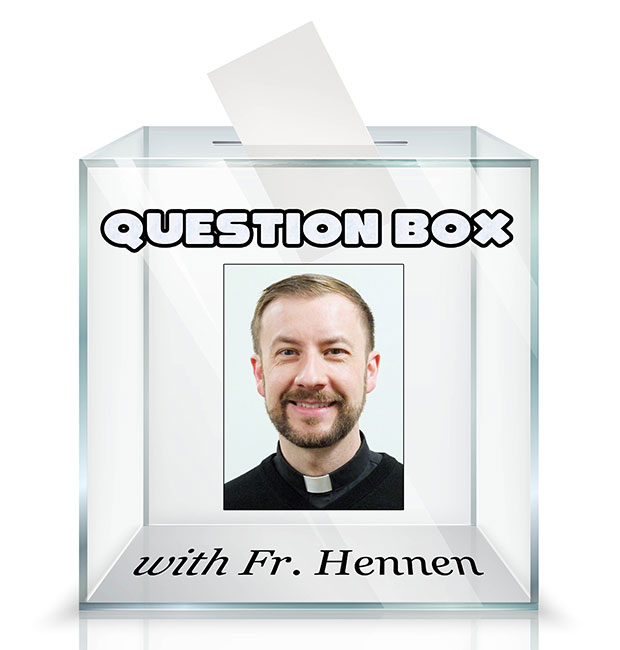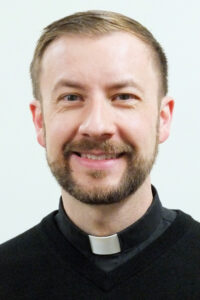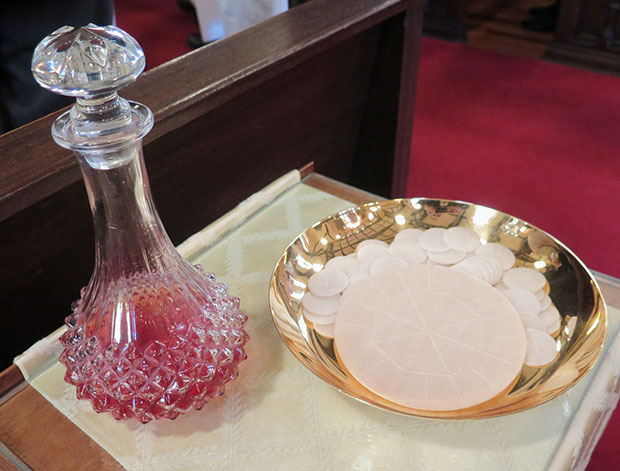 Q: When did the idea of everyone having a guardian angel begin? How do we know this is true?
Q: When did the idea of everyone having a guardian angel begin? How do we know this is true?
A: Let me first say that I do believe in angels and in guardian angels. I have a bad feeling my guardian angel is going to show me the “highlight reel” of all the stupid stuff I did as a kid at my particular judgment.
The Catechism states: “The existence of the spiritual, non-corporeal beings that Sacred Scripture usually calls ‘angels’ is a truth of faith. The witness of Scripture is as clear as the unanimity of Tradition.” It goes on to say: “From its beginning until death, human life is surrounded by their watchful care and intercession,” and, quoting St. Basil (303-378 AD), “Beside each believer stands an angel as protector and shepherd leading him to life” (CCC par. 328, 336).
St. Jerome (c. 345-420 AD) also made an early mention of this idea, in his commentary on Matthew’s Gospel, specifically the verse in which Jesus says, “See that you do not despise one of these little ones, for I say to you that their angels in heaven always look upon the face of my heavenly Father” (Matthew 18:10). Belief in angels watching over people is certainly present in Judaism and so this is not a uniquely Christian belief. A belief in angels even existed among the ancient Greeks and in ancient religions.
Much later in the tradition, St. Thomas Aquinas further expands our understanding of angels in their various orders, though at a certain point we are delving into speculative theology. Still, this idea is not foreign to but very much in keeping with some of our longest held beliefs about God’s protective care for us.
As to how we can know this is true, I suppose in the same way we can know anything in our faith is true: divine revelation, specifically the witness of Scripture and its trusted interpretation through Tradition. Basically, it comes down to what we believe God has revealed to us either directly or through those trusted and holy people who have gone before us.
While we are on the topic of angels, I always like to clear up a common misconception, namely, that we become angels when we die. If you really want wings and a harp, I’m sure God can set you up, but we are human beings, a separate class of creation. We are both body and soul, spiritual and corporeal beings. Like angels, God created us and like them, God gave us free will. Unlike them, we do not continuously behold the face of God. As spiritual beings, the angels can be both with us and with God in a way that we can only imagine.
This, by the way, is where the idea of demons comes in, which is a much thornier topic (perhaps for a future column). The idea is that for some of the angels to have seen God and his loving will for all creation and still say, “Thanks, but no thanks,” was for them a much more definitive break from God than me just deciding that a second piece of pie sounds good.
Getting back to how we can know, I suppose some people may have had some very real stories of how angels came to their rescue. I have heard a number of these over the years. I will admit I tend to be a skeptic and look for every natural explanation first, but I do not rule out the supernatural. God is much bigger than our comprehension.
Until we know for sure, I will keep saying a prayer to my guardian angel.
(Father Thom Hennen serves as the pastor of Sacred Heart Cathedral in Davenport. Send questions to messenger@davenportdiocese.org)









